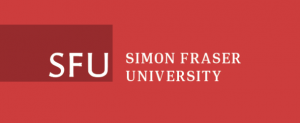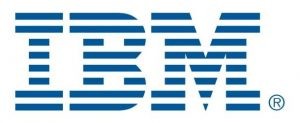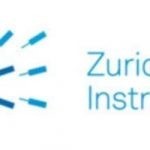Quantum News Briefs July 20: IBM’s error mitigation technique charting way to quantum advantage, SK Telecom puts quantum key distribution forward as global standards before ITU-T standards unit, China’s roadblocks to becoming a science superpower are historical & cultural, and MORE

Quantum News Briefs opens today with a discussion of IBM’s error mitigation technique and how it will open chart the path to quantum advantage, followed by news that SK Telecom has put its quantum key distribution forward as global standards before ITU-T. Third is summary of a recent study that says China’s roadblocks to becoming a science superpower are historical & cultural, and MORE.
*****
IBM’s Error Mitigation Technique Charting Way to Quantum Advantage
Frederic Lardinois details for TechCrunch how IBM has brought back talk about quantum advantage again by discussing IBM’s plans to use a novel error mitigation technique to chart a path toward running the increasingly large circuits it’ll take to reach this goal — at least for a certain set of algorithms.
IBM is betting on new error mitigation techniques, dubbed probabilistic error cancellation and zero-noise extrapolation. At a very basic level, you can almost think of this as the quantum equivalent of the active noise cancellation in your headphones. The system regularly checks the system for noise and then essentially inverts those noisy circuits to enable it to create virtually error-free results.
Error mitigation is about finding ways to deal with the physical errors in certain ways, by learning about the errors and also just running quantum circuits in such a way that allows us to cancel them,” explained Chow. “In some ways, error correction is like the ultimate error mitigation, but the point is that there are techniques that are more near term with a lot of the hardware that we’re building that already provide this avenue. The one that we’re really excited about is called probabilistic error cancellation. And that one really is a way of trading off runtime — trading off running more circuits in order to learn about the noise that might be inherent to the system that is impacting your calculations.”
*****
SK Telecom Puts Quantum Key Distribution Forward as Global Standards Before ITU-T Standards Unit
 South Korean SK Telecom has succeeded in getting its approaches to quantum-era securing considered as global standards. The company has proposed its approach to quantum cryptography to ITU-T, the standards unit of the International Telecommunication Union, a UN body. SK says its two technologies have been adopted as new work items at the ITU-T meeting held in Geneva.
South Korean SK Telecom has succeeded in getting its approaches to quantum-era securing considered as global standards. The company has proposed its approach to quantum cryptography to ITU-T, the standards unit of the International Telecommunication Union, a UN body. SK says its two technologies have been adopted as new work items at the ITU-T meeting held in Geneva.
Quantum cryptography communication networks are seen as the route to securing data on the way through networks and into and out of data centers.
Both technologies feature quantum key distribution (QKD), which feature quantum physics techniques to replace PKD systems, such as Diffie-Hellman, first proposed in 1976.
Ha Min-yong chief development officer of SK Telecom, said: “The approval of these two items by ITU-T carries a significant meaning as they will serve a pivotal role in accelerating the adoption of quantum cryptography communication throughout the globe.”
SK Telecoms has built a pilot QKD infrastructure on South Korea and is developing application services for 17 different institutions from the public, medical and industrial sectors.
*****
China’s Roadblocks to Becoming a Science Superpower Are Historical & Cultural
Defense One features an extensive article examining China’s roadblocks to becoming a science superpower.In Beijing, China has entered its latest policy-planning period, the 14th Five-Year Plan. Building on strong performance in common science-and-technology indicators and advances in cutting-edge areas such as quantum computing, AI and hypersonic flight,
China’s ability to realize these visions depends on its answer to the question that any government has to ask of its science and innovation policy: “What is the best way to organize and oversee scientific research in pursuit of national objectives?”
A recent from for the China Aerospace Studies Institute found that answering these questions may not be as easy as Beijing hopes. The first challenge for the Chinese Communist Party is shaped by the 19th-century circumstances surrounding the origin of modern Chinese thinking on science policy. Historical factors created a view of S&T which was both highly utilitarian and often falsely equated science with technology. This utilitarian view continues to this day, with major implications for China’s S&T policy. One example is an overly strong emphasis on the D in R&D, at the cost of spending on the kind of basic and applied science which is critical to innovation and scientific breakthroughs.
As well, China continues to apply a highly centralized “whole of nation” approach to scientific research, influenced by its top-down Marxist-Leninist culture. This prioritizes Party control over S&T policies. The freedom of inquiry, which is a hallmark of Western scientific research institutions, thus continues to be a major blind spot for Chinese S&T.China’s preference for top-down centralized S&T planning not only stifles innovation, but also assumes that advances can be scripted via large-scale mobilizations and R&D megaprojects. narrow focus on raw numbers hides a wide range of serious problems. There is the widespread phenomenon of xueshu laji: the “academic garbage” that takes the form of mountains of useless “garbage papers” produced only to check a box rather than advance the field.
*****
SEMI Japan Establishes “SEMI Quantum Computer Council”
 SEMI Japan has established a”SEMI Quantum Computer Council” and made the announcement in a recent press release summarized here.
SEMI Japan has established a”SEMI Quantum Computer Council” and made the announcement in a recent press release summarized here.
Since 2020, SEMI Japan has focused on and introduced quantum computer technology, such as holding seminars and pavilion exhibitions at SEMICON Japan. SEMI Japan established a council and held a kick-off meeting on May 18. The chairman of this council was Yuichiro Minato, CEO / CTO of blueqat Corporation, and Tomoki Nagai, General Manager of Materials Informatics Promotion Office, JSR Corporation.
The purpose of the council is to promote communication and information sharing between SEMI member companies and quantum computer personnel regarding quantum computers, which are expected as future computing technologies, and to promote commercialization through technical exchanges and cooperation. We aim to create new business opportunities for SEMI member companies. Domestic semiconductor supply chain companies and 10 research institutes / organizations are participating in the establishment, and SEMI plans to further expand the number of members in the future.
*****
150,000 Qubits Printed on a Chip
 IEEE Spectrum reports on scientists’ recent discovery that so-called spin qubits manufactured in silicon may prove especially promising for quantum computing. “Silicon spins are some of nature’s very best natural qubits,” says study cosenior author Stephanie Simmons, a quantum engineer at Simon Fraser University in Burnaby, B.C., Canada.
IEEE Spectrum reports on scientists’ recent discovery that so-called spin qubits manufactured in silicon may prove especially promising for quantum computing. “Silicon spins are some of nature’s very best natural qubits,” says study cosenior author Stephanie Simmons, a quantum engineer at Simon Fraser University in Burnaby, B.C., Canada.
For the first time, researchers have detected single spins optically in qubits in silicon. Such optical access to spin qubits suggests it may one day be possible to use light to “have qubits entangling with each other across a chip, or across a data center as easily as if they’re side by side,” Simmons says.
Although the researchers have fabricated many qubits in this new study, “these have not yet been wired up into a working quantum computer,” Simmons cautions. “The optical access to these spins will make this wiring a lot easier than many other approaches, but this technology is still very young and there is a lot of work to be done.”’
Silicon spin qubits are among the most stable qubits created to date. In addition, this technology can theoretically rapidly scale up with the support of the decades of work spent developing the global semiconductor industry.
Also reported in IQT News: Simon Fraser University research finding advances silicon quantum computing
*****





















